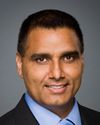Also, thank you to the witnesses for providing such detailed and very thorough information. I think it has really helped us understand the issue and what we need to do. Thank you for that.
I have a couple of questions. First of all, to Mr. Brown, going though your bill.... It's a short bill, and it really focuses on increasing awareness and information, which I think is really important. Hearing from the witnesses, it seems to me that we need to go a bit further. We've heard very important information today. I was surprised to learn that ultrasound is not part of a general follow-up.
I think a lot of women are really confused now about what the heck is going on. We keep getting contradictory information about mammograms, such as “Mammograms are no good, don't worry about them”, or “Yes, you should go”. I do think there has been a lot of confusion, maybe because there is new information coming out.
Mr. Brown, when you talk about increasing awareness concerning the implications of heterogeneous or dense breast tissue, I wonder what you mean specifically. In your mind, how does your bill spell out how that should be followed up? Is that something you think would be left to the screening initiative, provincial health authorities, or whoever? It's not quite clear. Clearly, you are saying that awareness should be raised and we have to figure out what information gaps there are, but how does the bill address what actually needs to be done in terms of follow-up?
Based on what we've heard today—I don't know whether you were able to consult with any of these organizations prior to this—it seems to me they have identified a few things here. I would ask you that, and I hope you are open to the idea that we could strengthen the bill based on what we've heard today. I know the NDP has some amendments.
If you could just address that in terms of.... Yes, it's about raising awareness and looking at implications, but what does that actually mean in terms of what is followed up, whether it's with better training for practitioners, or better technologies or tools, or whether it's the ultrasound or the automated machine? How do you see that fitting in with your bill?





